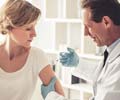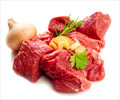The 1976 'swine flu' shot has been linked to stronger immune response to 21st century pandemic flu in a new study.
The 1976 'swine flu' shot has been linked to stronger immune response to 21st century pandemic flu in a new study.
Researchers at St. Jude Children's Research Hospital found that individuals who reported receiving the 1976 vaccine mounted an enhanced immune response against both the 2009 pandemic H1N1 virus and a different H1N1 flu strain that circulated during the 2008-09 flu season.Lead author Jonathan A. McCullers, an associate member of the St. Jude Infectious Diseases Department, said: "Our research shows that while immunity among those vaccinated in 1976 has waned somewhat, they mounted a much stronger immune response against the current pandemic H1N1 strain than others who did not receive the 1976 vaccine."
McCullers said it is unclear if the response was enough to protect against the 2009 H1N1 virus, but the study points to a lingering benefit.
The findings also raise hope that those vaccinated against the 2009 H1N1 pandemic strain might also enjoy a similar long-term advantage.
The study is the first to focus on whether those vaccinated against the 1976 H1N1 strain made antibodies against the 2009 pandemic flu, including antibodies that could block the virus from infecting cells.
The study involved 116 St. Jude employees and spouses age 55 and older.
Advertisement
That outbreak triggered fears of a flu pandemic and led to a massive government effort to quickly produce and distribute a vaccine.
Advertisement
Researchers reported that nearly 90 percent of volunteers made antibodies able to recognize a key protein on the surface of both the 2009 pandemic and the 2008-09 H1N1 flu strains.
Those antibodies were present in numbers large enough to meet one federal gauge of vaccine effectiveness.
Nineteen percent of volunteers also produced antibodies that neutralized the 2009 pandemic strain and blocked it from infecting cells.
In comparison, more than 67 percent of volunteers had antibodies that neutralized the 2008-09 seasonal H1N1 strain.
Those vaccinated in 1976 were more likely to make neutralizing antibodies against the new pandemic strain.
More than 17 percent of the 1976-vaccine group made such antibodies in large quantities.
Only about 4 percent of those who had not received the 1976 shot had comparable levels of antibody production.
The difference between the two groups was statistically significant, meaning it was unlikely chance alone explained the result.
The study has been published in the online issue of the journal Clinical Infectious Diseases.
Source-ANI
RAS













